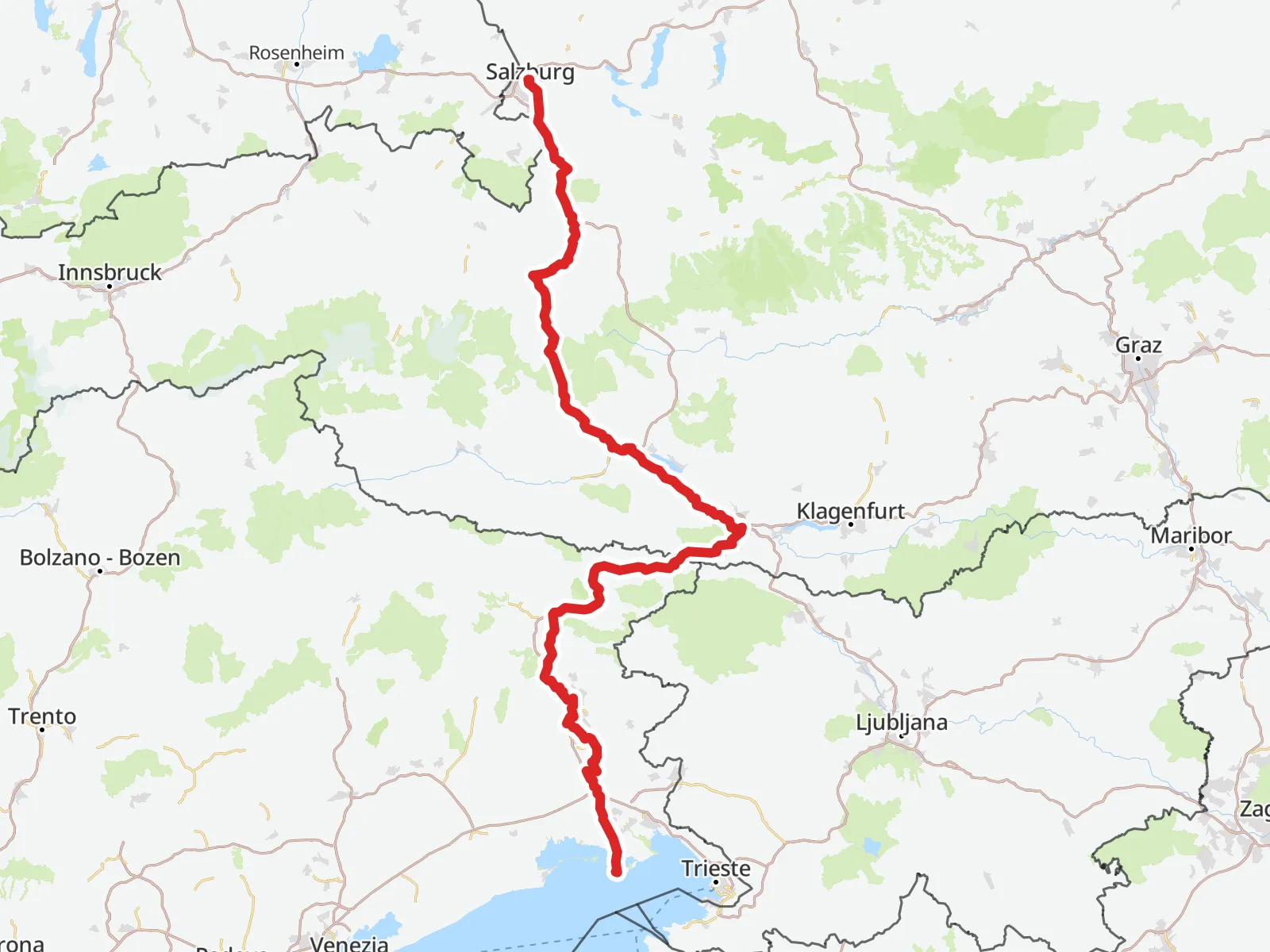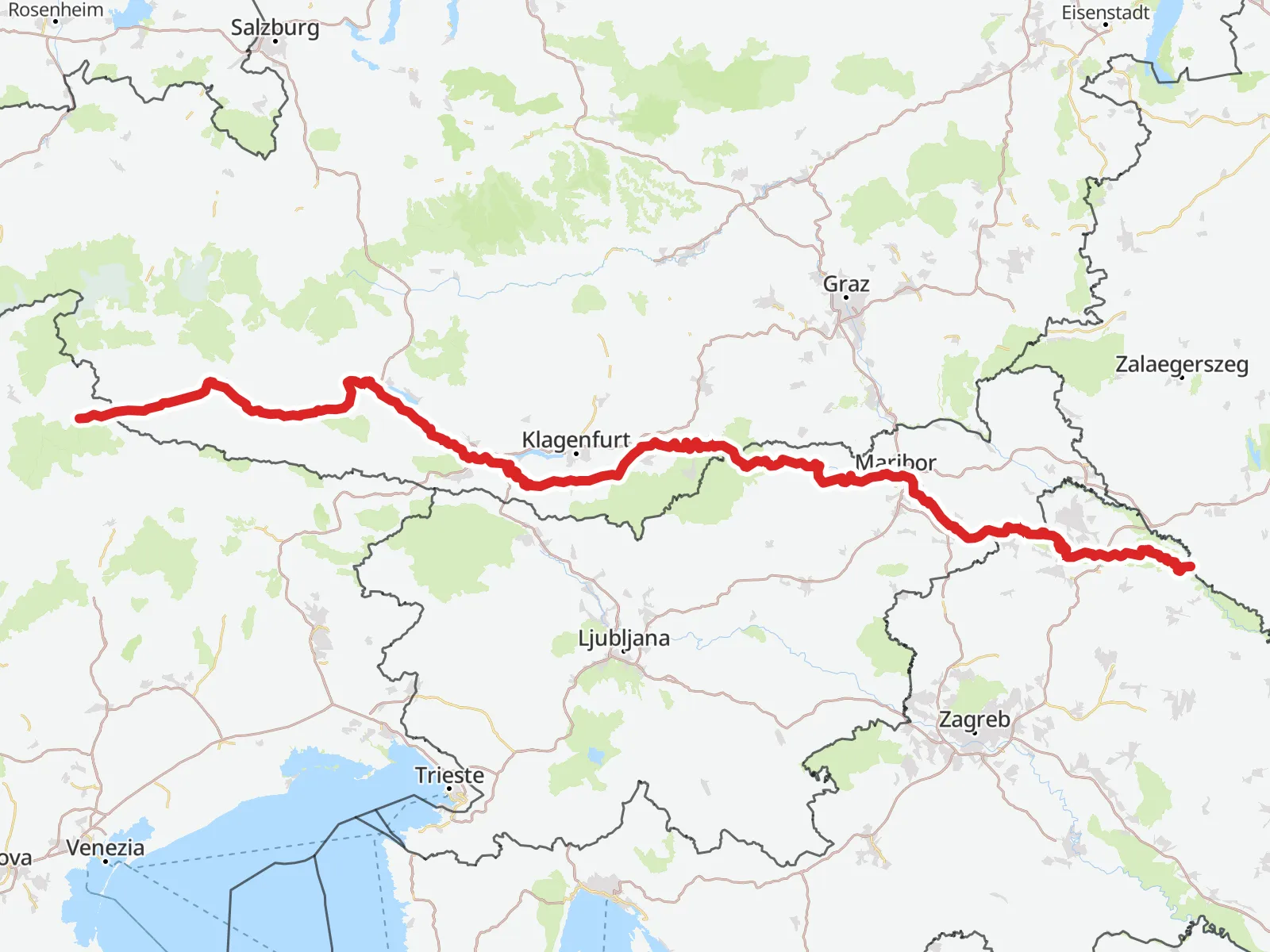Austria cycling routes

Austria is a true paradise for cycling enthusiasts. While the country is famous for its Alpine climbs and challenging mountain passes, it actually offers incredible diversity of routes – from easy, family-friendly trails along rivers to alpine switchbacks for seasoned cyclists. Excellent infrastructure, a dense network of marked cycle paths and breathtaking landscapes make a cycling adventure in Austria an unforgettable experience.
Cyclists can expect views of glaciers, mountain lakes, Danube valleys filled with vineyards, and picturesque towns steeped in history. Austria has a strong cycling culture – cyclists can count on safe paths, secure parking, service points, and in many regions charging stations for e-bikes.
This is a country that truly embraces active tourism – you can reach almost anywhere by bike, and thanks to excellent rail connections it's easy to plan a flexible journey with your bicycle.
Table of Contents
Cyclist-Friendly Accommodation – Bett+Bike
When planning a cycling route in Austria, look for establishments with the Bett+Bike certification. This certification system, introduced by ADFC (Allgemeiner Deutscher Fahrrad-Club), operates in Austria and identifies accommodation that's particularly welcoming to cyclists.
Establishments with Bett+Bike certification meet essential criteria for two-wheeled travelers:
- Accept cyclists for single-night stays
- Provide secure bike storage
- Offer facilities for drying clothes and equipment
- Supply basic bike repair tools
- Share information about local routes and bike services
The Bett+Bike network includes hundreds of establishments throughout Austria – from hotels and guesthouses to agritourism farms, youth hostels and campsites. Most are located along popular cycling routes, such as Donauradweg, Tauernradweg or around Lake Neusiedl, which greatly simplifies stage planning.
Law and Cyclists in Austria
Traffic regulations for cyclists are governed by the Austrian traffic code (Straßenverkehrsordnung, StVO). Here are the key rules that cyclists need to know:
| Rule / Regulation | Austria |
|---|---|
| Bicycle helmet | Mandatory for children up to 12 years; recommended but not required for adults |
| Riding on sidewalk | Strictly prohibited (except for small children); cyclists must use cycle path or roadway |
| Cycle paths | Obligation to use marked cycle paths (Radweg) where available |
| Carrying children | Allowed in child seats and trailers up to 12 years, helmet mandatory for children |
| Lights and bike equipment | Mandatory front light (white) and rear light (red), reflectors, brakes, bell; regular inspections |
| Alcohol limit | 0.8‰ limit for cyclists (0.5‰ for car drivers) |
| Right of way at cycle crossings | Drivers must yield to cyclists already on marked crossings |
Key takeaway: Austrian regulations prioritize safety with strict requirements for children's helmets, prohibition of sidewalk riding, and mandatory use of cycle paths. The alcohol limit is more lenient than in some countries, but equipment standards are rigorously enforced.

How to Get to Austria with Your Bike?
The most convenient option is by train. Direct rail connections run to Vienna, Salzburg, and Innsbruck from many European cities. Austrian railways (ÖBB) accommodate bike transport on most trains, though advance reservation of bike space is often required.
Long-distance buses like FlixBus also serve Vienna and Salzburg, with an increasing number of buses equipped with bike racks.
Driving with a bike rack remains a popular alternative, as Austria is easily accessible by road from most of Central Europe.
Rent or Bring Your Own Bike?
Austria excels in bike rental infrastructure. In major cities, tourist centers, and along main cycling routes, you'll find a wide selection including trekking bikes, mountain bikes, e-bikes, cargo bikes, and child trailers. Bike-sharing networks like Nextbike and regional rental shops operate from railway stations, making it easy to start your journey immediately upon arrival.

ÖAMTC and Radlobby: Cycling Organizations in Austria
Radlobby Österreich actively promotes cycling transport and cycle tourism throughout Austria. The organization publishes valuable resources and advocates for cyclist-friendly infrastructure. Additionally, ÖAMTC (Austria's automobile association) supports cyclists by publishing detailed maps, route guides, and practical advice. Their materials are invaluable when planning your Austrian cycling adventure.
How Much Does a Week-Long Cycling Trip Around Austria Cost?
Budget expectations for a week-long cycling tour in Austria:
- Transportation: Train connections from major European cities – approximately €150–250 return
- Accommodation: Campsites €15–25 per night, guesthouses €40–60 per night
- Food: €25–40 daily for meals and refreshments
- Additional expenses: Entry tickets, cable cars, attractions – €60–100 per week
Cycling Routes in Austria
Austria offers over 10,000 kilometers of official cycling routes, many holding international EuroVelo status. The most celebrated routes follow major rivers (Danube, Inn, Drava, Salzach), wind through picturesque alpine valleys, and circle pristine mountain lakes.
Routes feature excellent waymarking and maintenance – predominantly asphalted surfaces, separation from motor traffic, and passage through landscape parks and historic towns create ideal cycling conditions.

















